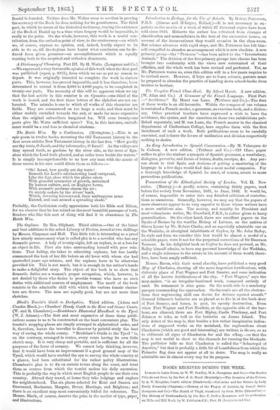Messrs. Bacon, with their usual alacrity, have published a very
good Map of Charleston, showing all the more important fortifications, with elaborate plans of Fort Wagner and Fort Sumter, and some indication of all the known fortifications of the city. "Fort Wagner," says the map-maker, "is an irregular-bastioned work, composed entirely of sand. Its armament is nine guns. On the north side is a musketry parapet commanding the approaches. On the south are all the obstruc- tions that engineering skill can devise for defence against assault." General Gilmore's batteries aro so placed as to fire in at the back-door of Fort Sumter, and hence, in part, its speedy destruction. Even. when Fort Wagner and Fort Moultrie, at the opposite side of the har- bour, are silenced, there are Fort Ripley, Castle Pinckney, and Fort Johnson to take, as well as the batteries on James Island. Tho only defect of the map is, that besides a few rather imaginative indica- tions of supposed works on the mainland, the explanations about Charleston (which are good and interesting) are written in the sea, so aa to obliterate all signs of Charleston bar and the oTuag,—so that the map is not useful to show us the channels for running the blockade. The publisher tells us that Charleston is called the " Sobtu3topol of America," but that is probably a little bit of boastfulness from which the Palmetto flag does not appear at all to deter. The map is really an admirable one in almost every way for its purpose.






























 Previous page
Previous page